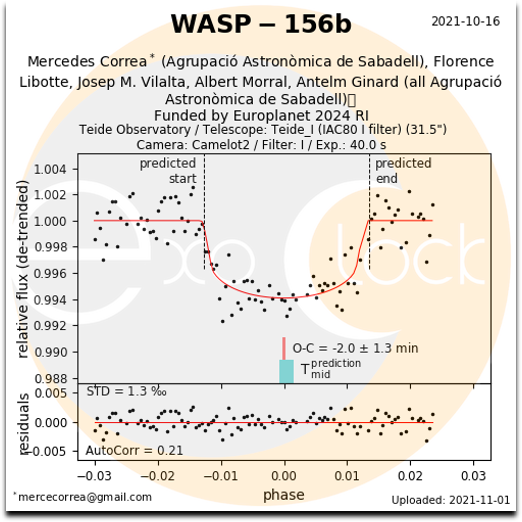Exoplanet observations: amateur experience from the Europlanet Telescope network
- Agrupación Astronómica de Sabadell (Barcelona) Spain, secretaria@astrosabadell.org
I this talk I will present the process to get observations on a Europlanet network telescope for an exoplanet transit. The steps of obtaining and also analysing the exoplanet transit light curve will be described. These data are used for the future Ariel space mission organised by ESA. Moreover, the talk will describe the process of writing the proposal for the request of the observation and in the particular case to the Instituto de Astrofísica de Canarias. In parallel, I will explain the way to obtain the funding for the telescope cost by Europlanet organization. Then I will go through the observations themselves and the live decisions regarding signal to noise, exposure time and so on in order to maximize the success probability. Then a report regarding the progress of the observation(s) is written and sent to the organisers. After the part of obtaining the observation, I will describe he process of analysing the images with the ExoClock HOPS software. Details will be provided on how to work with it, how to choose comparison stars, how to get the best light curve and to determine the exact moments of the ingress of the transit and the egress of it. Once the light curve is produced, it is uploaded in the ExoClock website and after reviewing it gets published at the ExoClock database. I would like to highlight that main partners in this work are two women, what is not so common in this field.

How to cite: Libotte, F. and Correa, M.: Exoplanet observations: amateur experience from the Europlanet Telescope network, Europlanet Science Congress 2022, Granada, Spain, 18–23 Sep 2022, EPSC2022-945, https://doi.org/10.5194/epsc2022-945, 2022.

